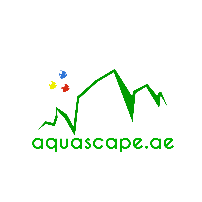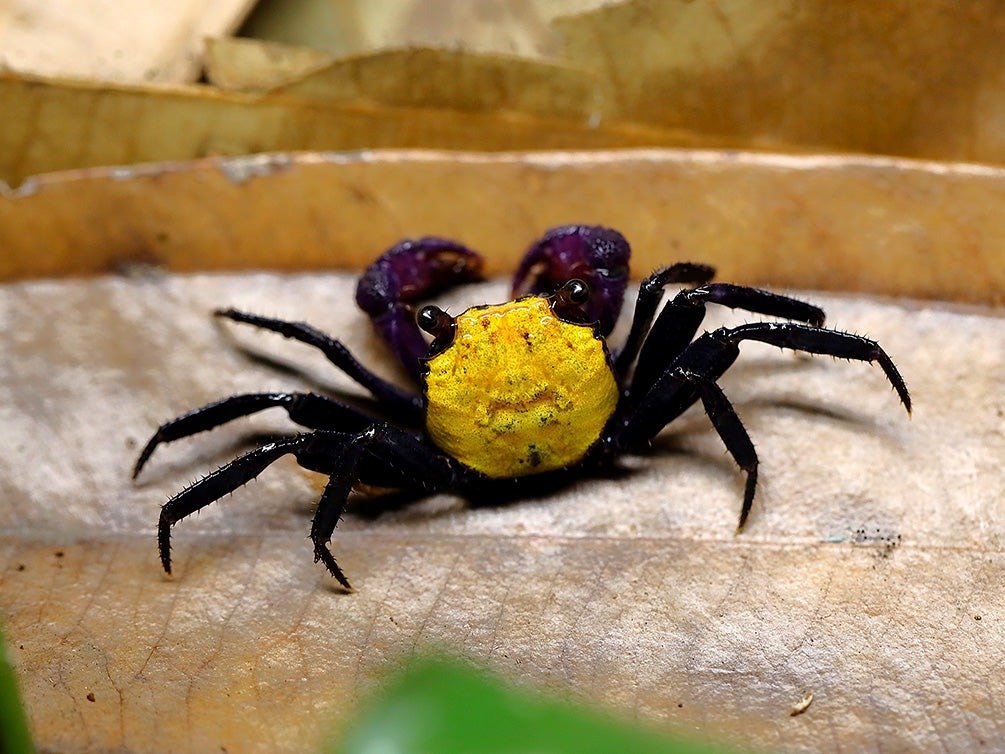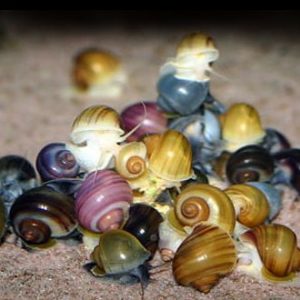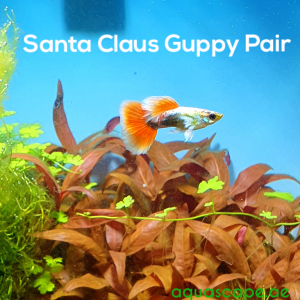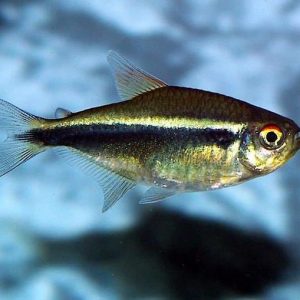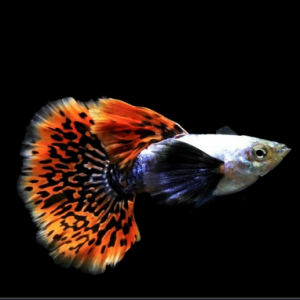Subtotal: د.إ19.99
Yellow Vampire Crab
The Yellow Vampire Crab is a visually striking, semi-terrestrial crustacean belonging to the Geosesarma genus, native to Southeast Asia—particularly Java, Sulawesi, Riau, and Krakatau in Indonesia. Here’s a detailed look at its appearance and traits:
—
🟡 Appearance
– Body Color: Deep purple to brownish carapace with yellowish-white speckles, resembling a starry night sky.
– Eyes: Bright yellow, perched on stalks—this glowing feature gives them their “vampire” nickname.
– Size: Typically around 2 inches (5 cm) in length.
– Legs & Claws: Often lighter in color than the body, with some males showing more vibrant hues.
—
🌿 Natural Habitat
– Found in dense tropical forests near freshwater rivers and lakes.
– Lives among rocks and vegetation, often burrowing or hiding in leaf litter.
– Semi-terrestrial: spends most of its time on land but requires access to shallow freshwater for hydration and molting.
—
🧬 Behavior & Traits
– Temperament: Semi-aggressive, especially males; territorial disputes are common.
– Lifestyle: Nocturnal—most active at night.
– Diet: Omnivorous, feeding on insects, worms, detritus, and plant matter.
– Social Structure: Best kept in small groups with one male to multiple females to reduce aggression.
—
These crabs are popular in paludarium setups due to their vivid coloration and unique behavior.
—
NOTE: OUR LIVE FISHES ARE ONLY DELIVERED TO DUBAI AND SHARJAH.
CUSTOMERS FROM ABUDHABI AND OTHER EMIRATE MAY CONTACT US TO INQUIRE ABOUT THE DELIVERY.
د.إ19.99
Yellow Vampire Crabs (Geosesarma sp.) are stunning, semi-terrestrial crustaceans known for their vivid coloration and captivating behavior. Here’s a comprehensive care guide to help you keep them healthy and thriving:
—
🦀 Habitat Setup
– Tank Size: Minimum 10-gallon for a small group (3–5 crabs). Larger is better for territorial behavior.
– Terrarium Type: Paludarium or land-dominant setup with shallow water areas. They spend most of their time on land.
– Substrate: Use a mix of coco fiber, sphagnum moss, and leaf litter to retain humidity and allow burrowing.
– Hiding Spots: Provide driftwood, rocks, cork bark, and plants for cover and climbing.
– Humidity: Maintain 75–90%. Mist daily or use a fogger.
– Temperature: Keep between 22–28°C (72–82°F). Use a low-wattage heat mat if needed.
– Lighting: Low to moderate. UVB is optional but can support plant growth and natural behavior.
—
💧 Water & Filtration
– Water Area: Include a shallow freshwater pool with easy access. Depth should be no more than 2–3 cm.
– Water Quality: Use dechlorinated water. Maintain pH around 7.0–7.5.
– Filtration: Gentle sponge filter or frequent water changes to prevent stagnation.
—
🍽️ Diet & Feeding
– Omnivorous Diet: Offer a mix of:
– Protein: Bloodworms, brine shrimp, crushed snails, fish flakes
– Veggies: Blanched spinach, zucchini, algae wafers
– Fruits: Small bits of banana or mango (sparingly)
– Feeding Frequency: 3–4 times per week. Remove uneaten food to prevent mold.
—
🧠 Behavior & Social Tips
– Semi-social: Can be kept in groups with enough space and hides. Males may be territorial.
– Molting: Provide calcium sources (cuttlebone, crushed eggshells) and avoid handling during molts.
– Handling: Avoid direct handling. They’re delicate and stress easily.
—
🧼 Maintenance & Health
– Spot Clean: Remove waste and moldy food daily.
– Full Clean: Refresh substrate and water weekly or biweekly.
– Watch for Signs: Lethargy, discolored shell, or refusal to eat may indicate stress or illness.
—

 Samurai Rock
Samurai Rock 